In the last blog entry, I shared a rigorous text set and prompt developed by an middle school ELA team. The team and I met (via Webinex) to discuss the students’ written responses. First we look at the strengths of each student’s analytic essay; then we discuss the students’ needs as writers. Integrated into this discussion are implications for our practice. You might use our insight (see notes below) to think about your own students’ writing or as part of an “looking together at student work” experience in a PLC. (You should be able to click on the images of the student work to see an enlarged image :).)
- Notice how these two essays (Student #1 and Student #2) are very different in how they address the prompt and yet they both address the prompt. Is the prompt the problem? This has been surfacing in my practice a lot. Sometimes we get what we ask for… Student #1
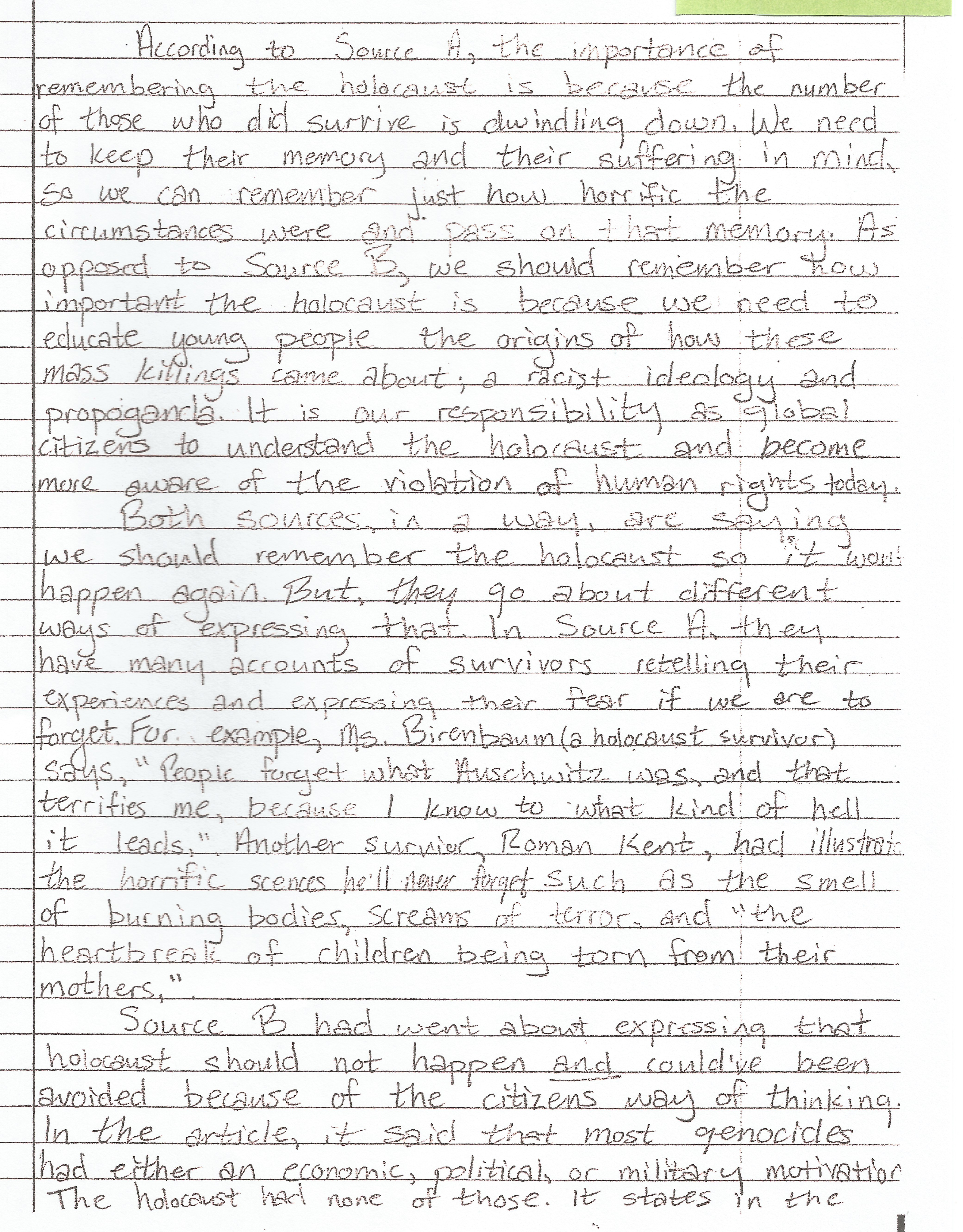
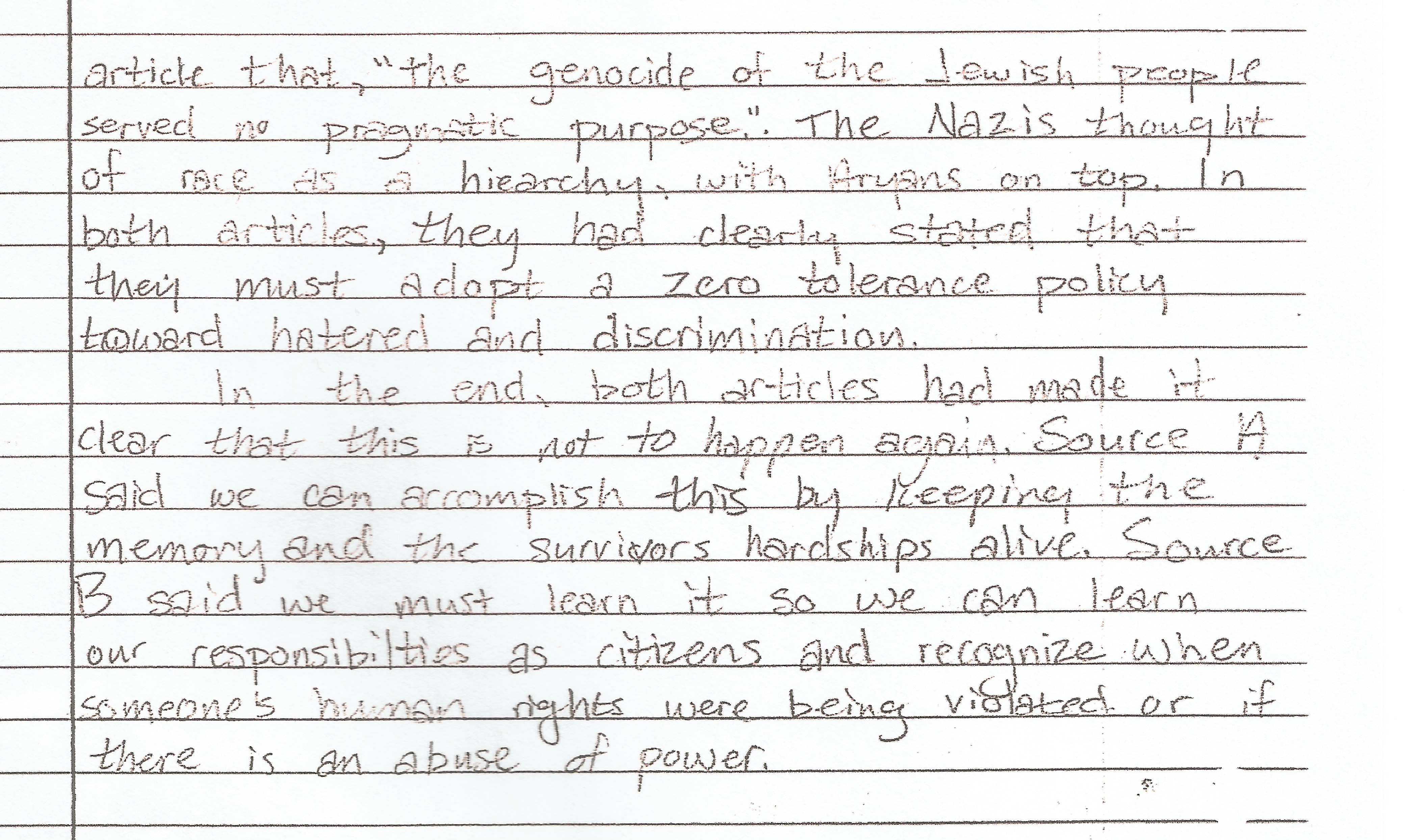 Student #2
Student #2 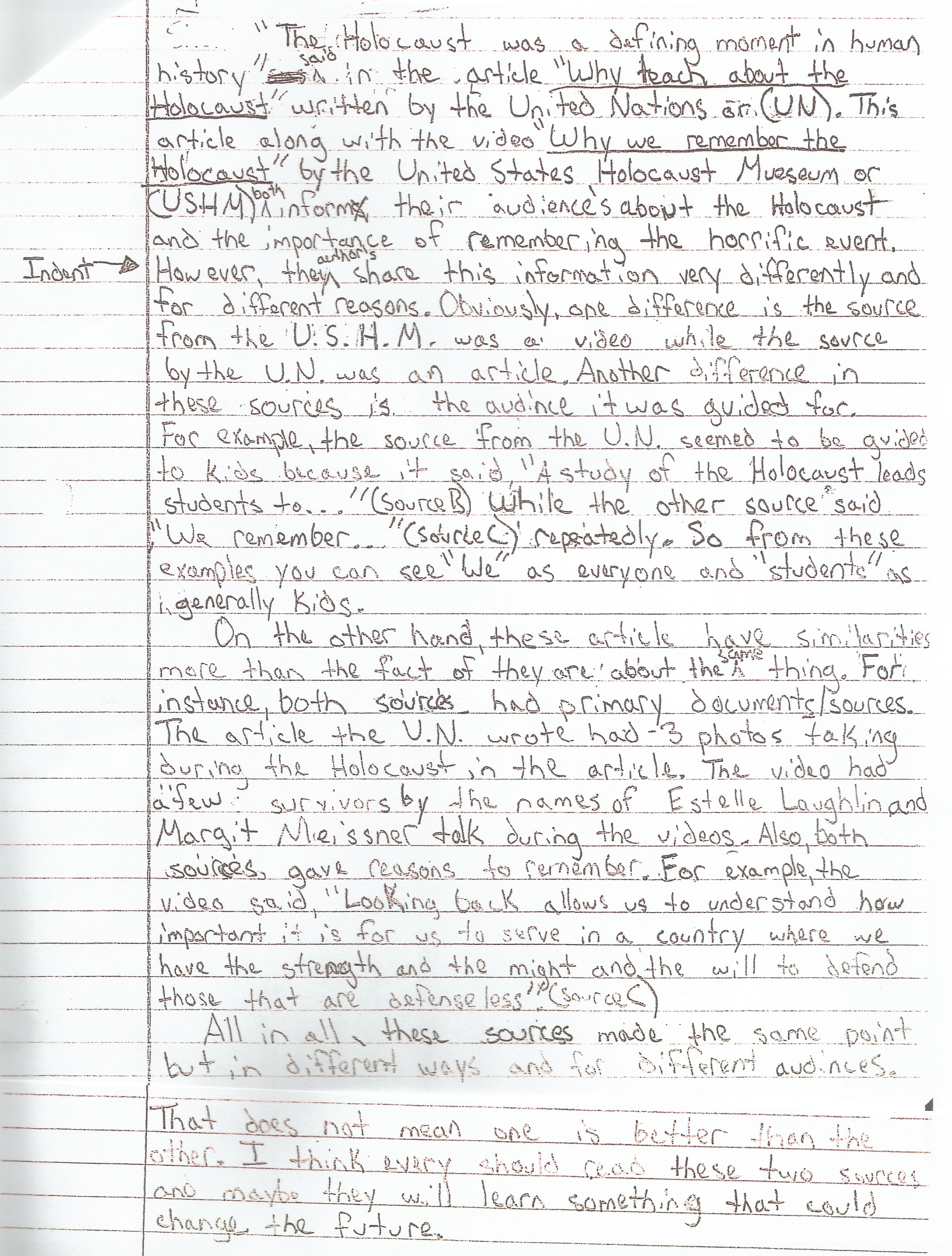
- In this next essay, notice how the student (#3) explains the textual evidence. Frequently, students do not explain the evidence or they seem to be engaged in filling-in-the-blank writing about text evidence that doesn’t reveal deep thinking. Notice how this student has systematically included explanations – but not in a way that sounds formulaic. I’d put this piece on a document camera or Smart Board or make copies–as a mentor text for the rest of the students. Student #3
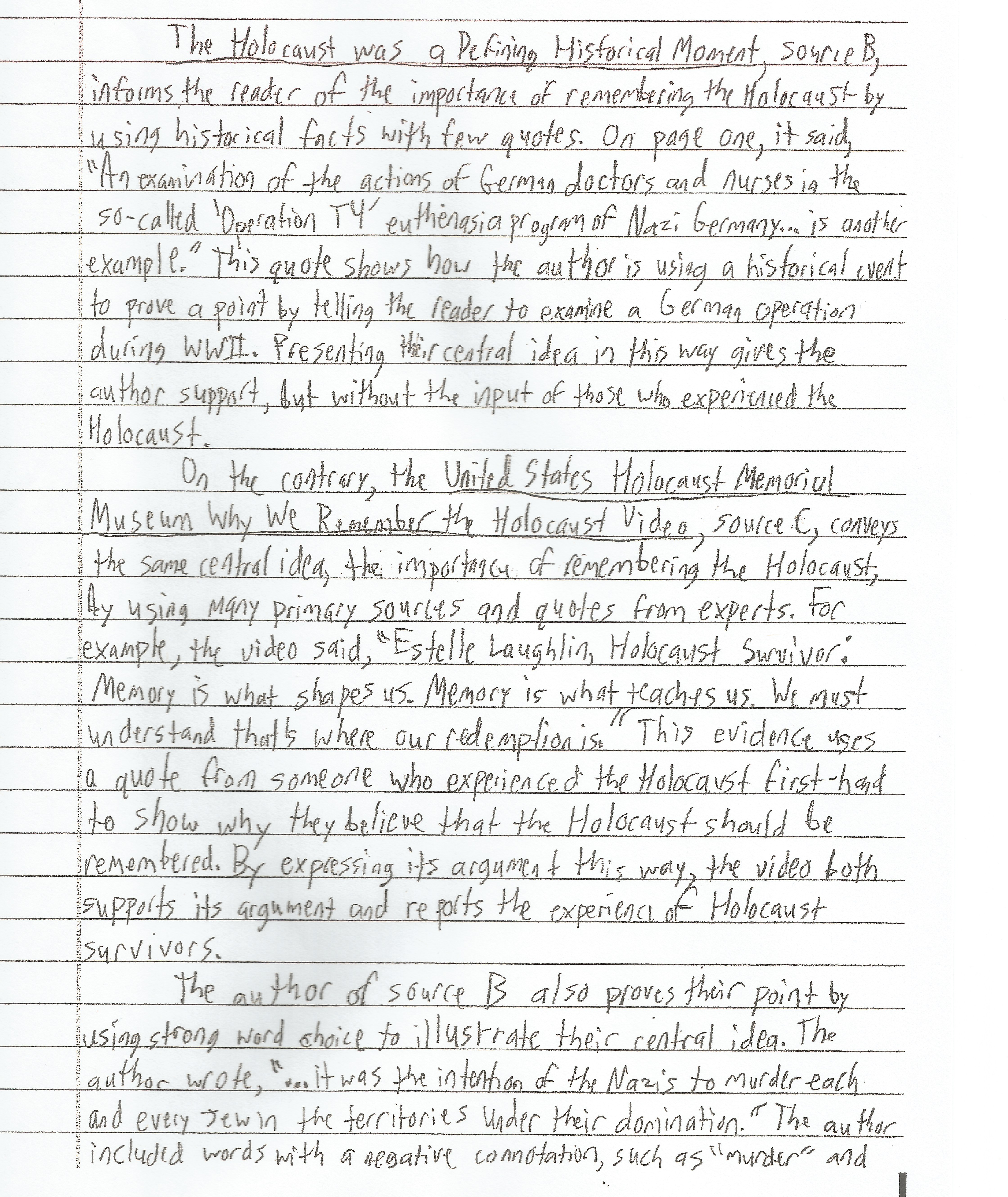
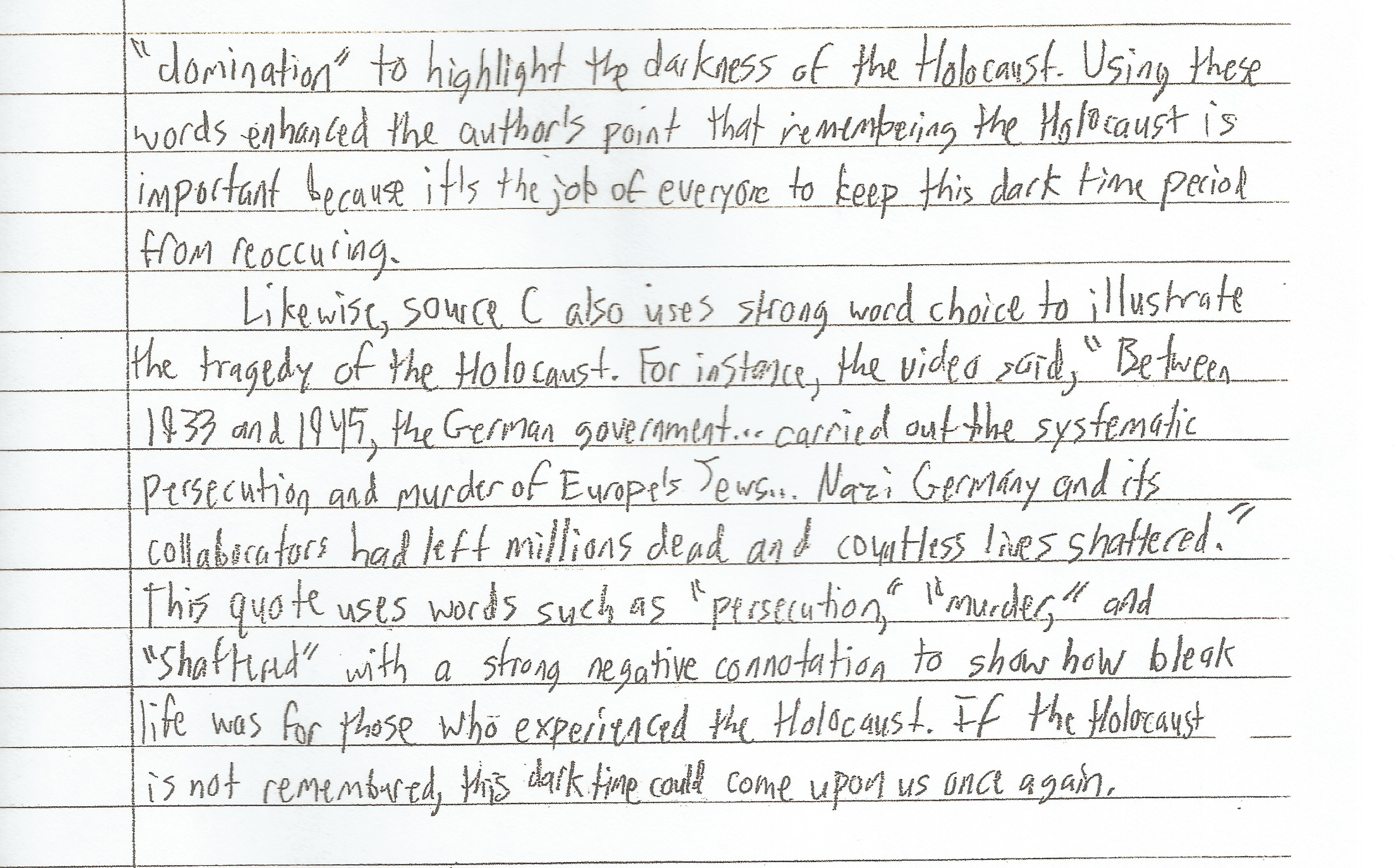
- For this example, what is the student (#4) assuming or inferring their reader will understand in paragraphs 2 & 3? This is a frequent pit fall for students–they write as though you, the reader, get what they are saying and they don’t have to explain. After a pretty good introduction, this student summarizes the two resources, implying a contrast, but not stating or explaining the contrast explicitly until the end of the essay. The student attempts to make clear the similarities and differences at the end of the essay, but these ideas would be stronger if they were integrated into the earlier content as well as developed further. SO – this student is on track and just needs some coaching. Student #4
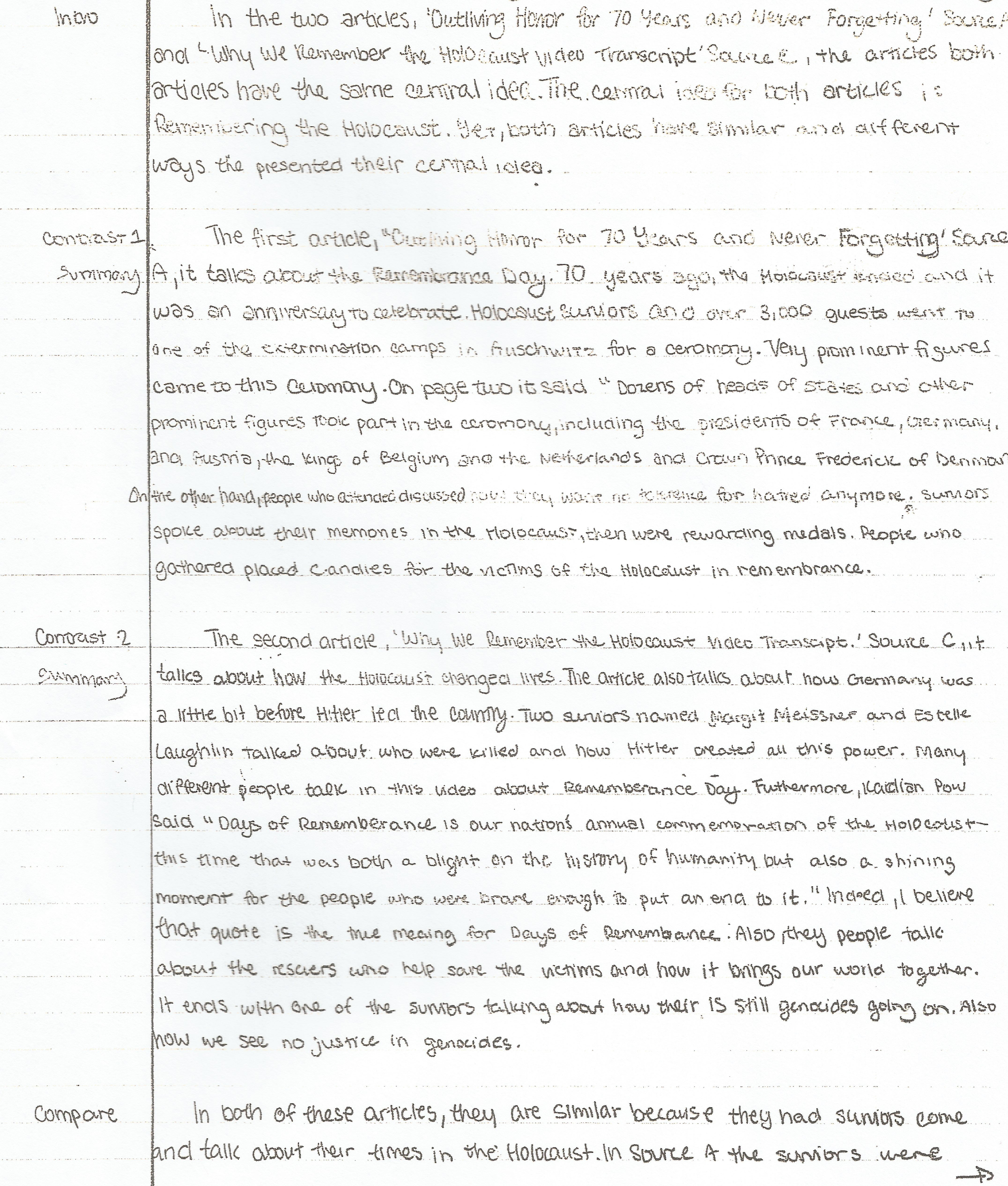
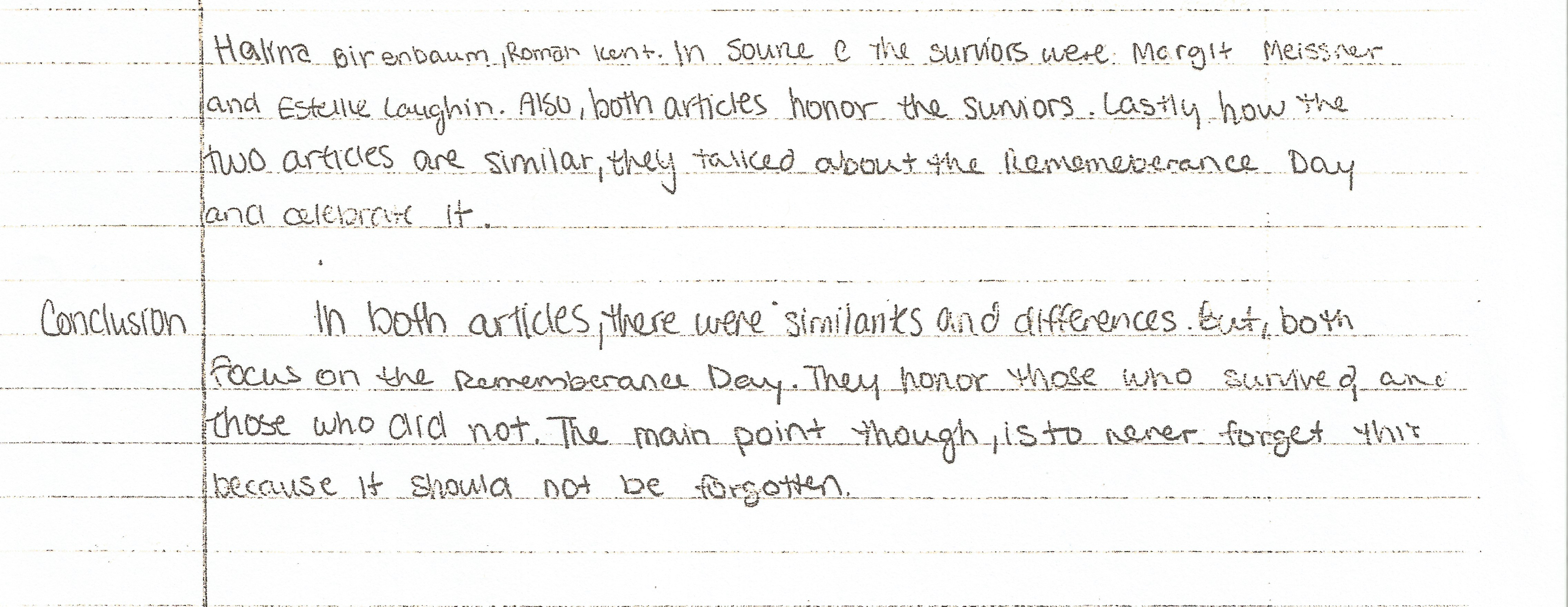
- In several of these essays, the connector language (i.e., the words students use to develop their ideas) is strong: as opposed to, both, but, yet, in both of these articles, however. The teacher has explicitly taught students this type of language. During the Webinex, we talked about creating an anchor chart with a list of these words as a reminder to students and adding to this list as the year moves forward.
- This writer (#5) starts with a clear introduction and then what happens? Frequently our students lose their way, huh? I’ve started wondering how my instruction gets in the way here. Students use a lot of cognitive energy on the intro and then their energy/focus wanes. What about giving the students an introduction that I wrote and asking them to only focus on developing the ideas, the middle part of the essay? Or just developing one idea (a well-written paragraph) with textual evidence and an explanation? Student #5
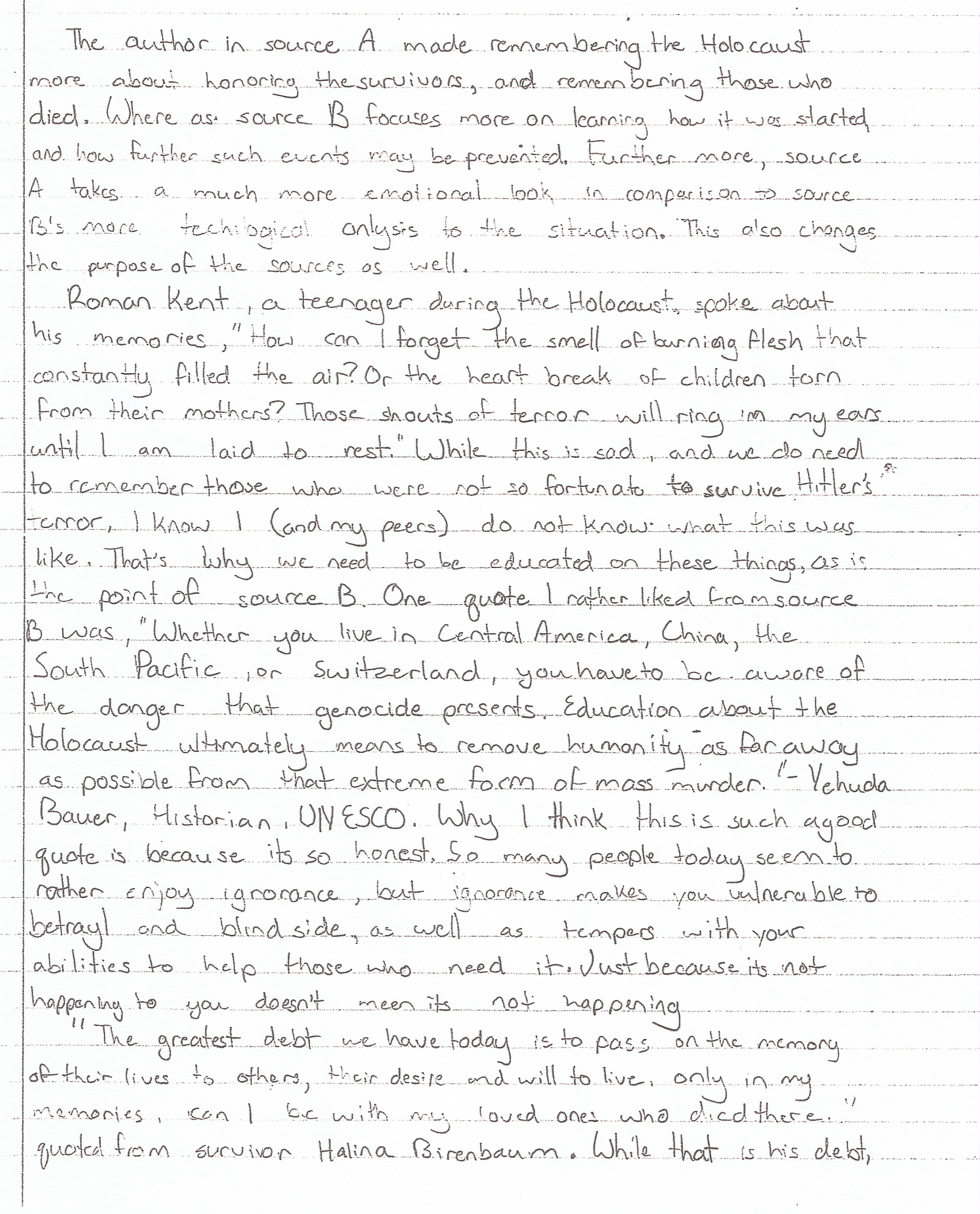

- And then there’s this writer (#6). There’s one in every classroom, huh? This student, while passionate about the topic he/she chose, doesn’t address the prompt. How can we check in with him or her to make sure they understand the prompt? If we have a group of students not addressing the prompt, how can we think aloud during a mini-lesson about what the prompt is asking? Student #6
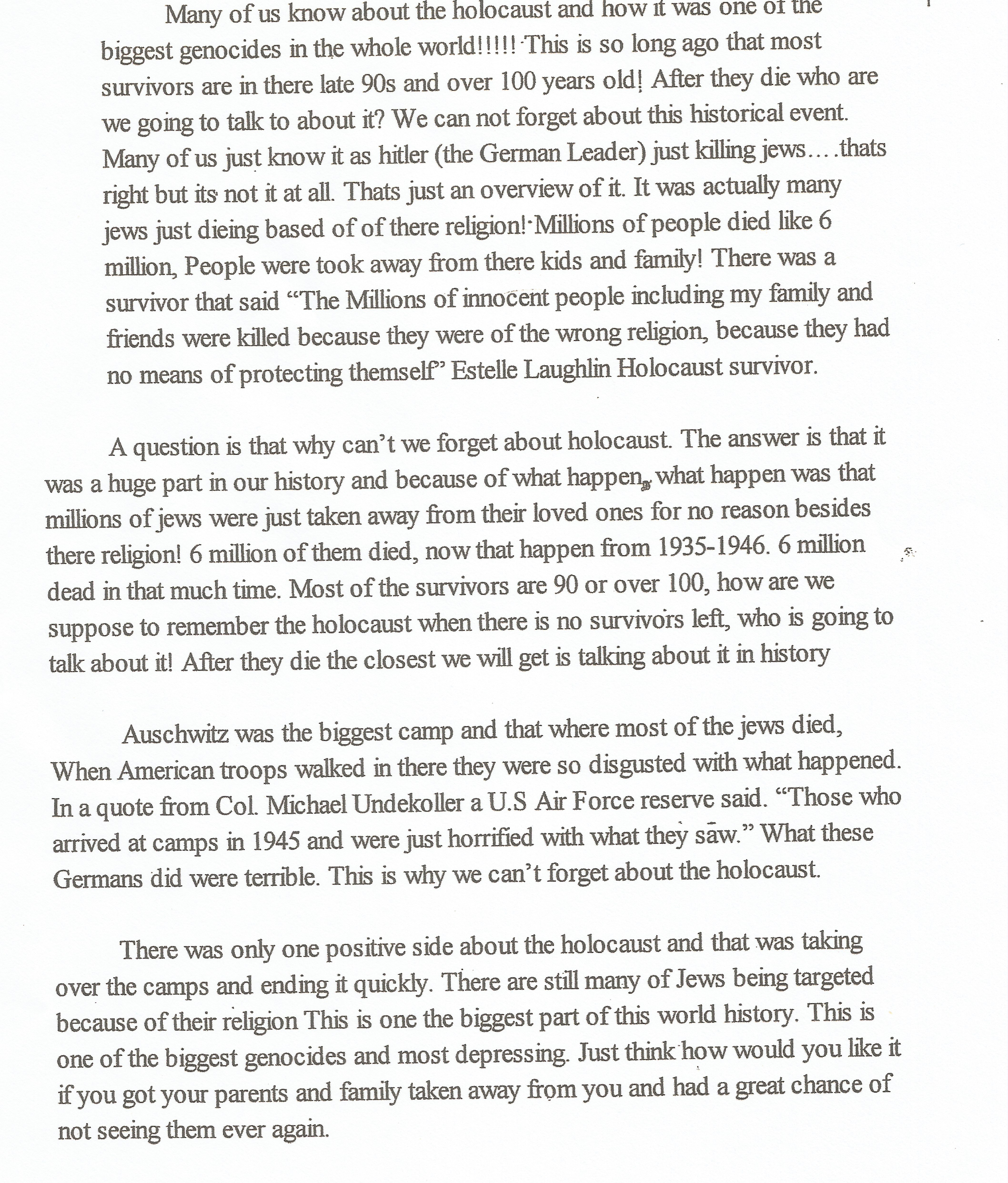
Okay…hope this helps.
